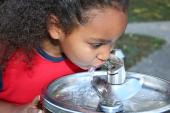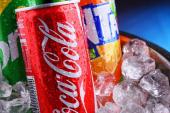Global Study Shows Sugary Drinks Boosting Diabetes and CVD at Alarming Rates
Even in sub-Saharan Africa, one of the last bastions untouched by Western diets, sugar-sweetened drinks are fueling disease.

Approximately one in 10 new cases of type 2 diabetes and one in 30 new cases of CVD can be attributed to consumption of sugar-sweetened beverages, a global study suggests. Together, these have the potential to be responsible for more than 300,000 deaths annually.
Among various regions, sub-Saharan Africa saw the largest increase in disease related to sugar-sweetened beverages over the study period of 1990 to 2020, with Latin America and the Caribbean also having disproportionally large burdens of disease related to sugary drinks.
Reporting the study in Nature Medicine, the researchers say effective policies and interventions are greatly needed to reduce these cardiometabolic heath burdens.
“There are parts of the world where . . . up to 25% of all new diabetes cases and 10% of all cardiovascular disease cases are estimated to be caused by sugar-sweetened beverages,” senior author Dariush Mozaffarian, MD, DrPH (Food is Medicine Institute at Tufts University, Boston, MA), told TCTMD. “Our study shows that we haven’t done a very good job of dealing with the health threats of sugar-sweetened beverages in the last 30 years.”
He added that sub-Saharan Africa stands out because it was one of the last regions of the world that didn’t have very high diabetes and CVD rates 30 years ago and wasn’t heavily influenced by beverage marketers.
“But soda companies have been aggressively going after every market and Africa is a big one, so that’s really concerning,” Mozaffarian said.
Sugary drinks contributed to approximately 20% of all new diabetes cases in sub-Saharan Africa and more than 27% of them in South Africa. Among the 30 most populous countries, Mexico, Columbia, and South Africa had the highest absolute numbers of new diabetes cases and the most new cases of CVD attributable to sugary drinks.
The study was published online January 6, 2025, in Nature Medicine.
Sociodemographic Disparities and Regional Nuances
For the analysis, Mozaffarian and colleagues, led by Laura Lara-Castor, PhD (University of Washington, Seattle), estimated the burdens of cardiometabolic diseases attributable to sugary drink consumption and changes over time in 184 countries.
The modeling the group used to derive the estimates incorporated age-adjusted etiologic effects of sugar-sweetened beverages on diabetes, ischemic heart disease, and ischemic stroke, both directly and mediated by body mass index, from previous meta-analyses and pooled analyses of prospective cohorts, supported by evidence from RCTs.
“We evaluated disease rates around the world, but the relationship between them was derived from these separately conducted meta-analyses or pooled analyses of long-term studies which have looked at how sugar-sweetened beverages relate to diabetes and obesity, and how sugar- sweetened beverages relate to weight gain adjusting for other background factors,” Mozaffarian noted.
The average adult consumed 2.6 servings per week of a sugary beverage, with each serving being about 8 ounces. Globally, this ranged from a high of 7.3 servings per week for adults in Latin America and the Caribbean to a low of 0.7 servings per week for adults in South Asia.
In all countries and regions, men had slightly higher sugary drink consumption than women, and younger people had higher mean consumption than older people.
In 2020, the 2.2 million new cases of diabetes and 1.2 million new cases of CVD related to sugar-sweetened beverages accounted for 10% and 3%, respectively, of all incident cases. This translated to 12.5 million cardiometabolic disability-adjusted life-years (DALYs), 80,278 diabetes-related deaths, and 257,962 CVD-related deaths.
By region, Latin America and the Caribbean had the highest absolute and proportional incidence of type 2 diabetes due to sugar-sweetened beverages, while Southeast and East Asia had the lowest. Similarly, the Middle East and North Africa had the highest absolute and proportional incidence of CVD attributable to sugary drinks, while Southeast and East Asia had the lowest.
Soda companies have been aggressively going after every market and Africa is a big one, so that’s really concerning. Dariush Mozaffarian
While the greatest burden of diabetes attributed to sugar-sweetened beverages was among people in their mid to late 40s, the proportional risk was found to be highest in a much younger age group, those 25 to 29 years old. For CVD related to sugary drinks, the absolute incidence increased with age, while the proportional risk decreased with age.
Some interesting differences were seen by education, urbanicity, and world region. When these were jointly considered, the highest proportions of incident diabetes attributable to sugary beverages were in high-educated and medium-educated adults in urban sub-Saharan Africa, followed by high- and medium-educated adults in both urban and rural Latin America and the Caribbean. The findings were very similar for CVD but also included higher-educated and medium-educated adults from rural areas of sub-Saharan Africa.
‘A Clarion Call’
The researchers say the findings are “a clarion call” that the traditional diet of sub-Saharan Africa has been infiltrated by Western diets and time is running out to turn things around.
In the United States, several cities have enacted excise taxes on sugary drinks over the past decade that have decreased both buying habits and consumption. To TCTMD, Mozaffarian said it’s clear, though, that every nation around the world needs some sort of combination, approach because single approaches like taxes alone are not going to work.
“In the last 5 years there’s been an explosion of national sugar-sweetened beverage taxes, some fairly small, like 5% or 10%, but some much higher, like 20% in some Middle Eastern countries or even 100%, doubling the price,” he noted. “There are at least 2 billion people living in countries with national soda taxes. So, I do think soda taxation is important and it should be at a high enough level to meaningfully reduce consumption, but the other important thing we need is warning labels to more clearly communicate to consumers.
“As a cardiologist, I see people all the time who when I tell them that drinking sugary beverages is bad for them, they say they didn’t know that,” Mozaffarian stressed. “So, not all Americans have heard the message and not everyone around the world has heard it.”
Another avenue that should be pursued, according to Mozaffarian, is ceasing sale of sugary beverages in schools, hospitals, and government work sites.
L.A. McKeown is a Senior Medical Journalist for TCTMD, the Section Editor of CV Team Forum, and Senior Medical…
Read Full BioSources
Lara-Castor L, O’Hearn M, Cudhea F, et al. Burdens of type 2 diabetes and cardiovascular disease attributable to sugar-sweetened beverages in 184 countries. Nat Med. 2025;Epub ahead of print.
Disclosures
- Lara-Castor reports research funding from the Gates Foundation, the American Heart Association, and Consejo Nacional de Ciencia y Tecnología outside the submitted work.
- Mozaffarian reports research funding from the US National Institutes of Health, the Gates Foundation, the Rockefeller Foundation, the Kaiser Permanente Fund at East Bay Community Foundation and the National Association of Chain Drug Stores Foundation; scientific advisory board membership for Beren Therapeutics, Brightseed, Calibrate, Elysium Health, HumanCo, Instacart, January Inc, Season Health, and the Validation Institute; equity in Calibrate and HumanCo; and chapter royalties from UpToDate, all outside the submitted work.





Comments